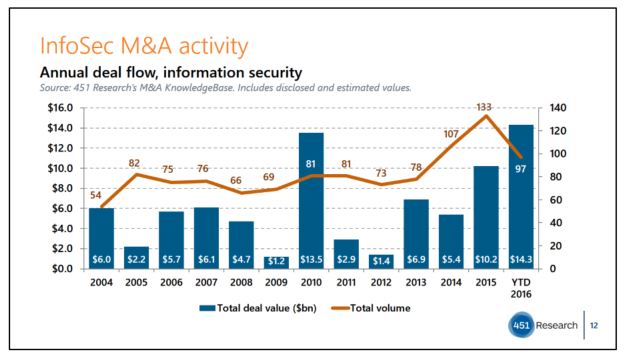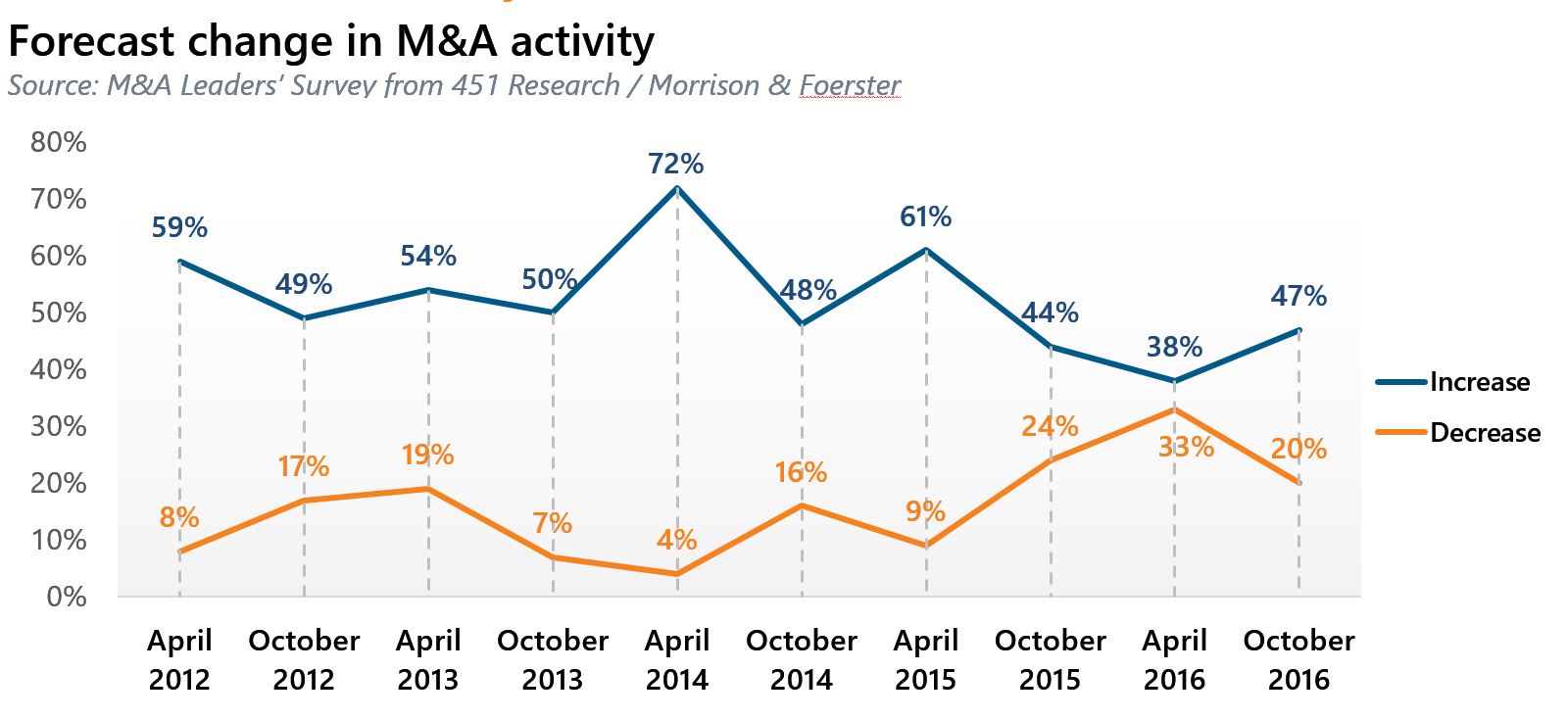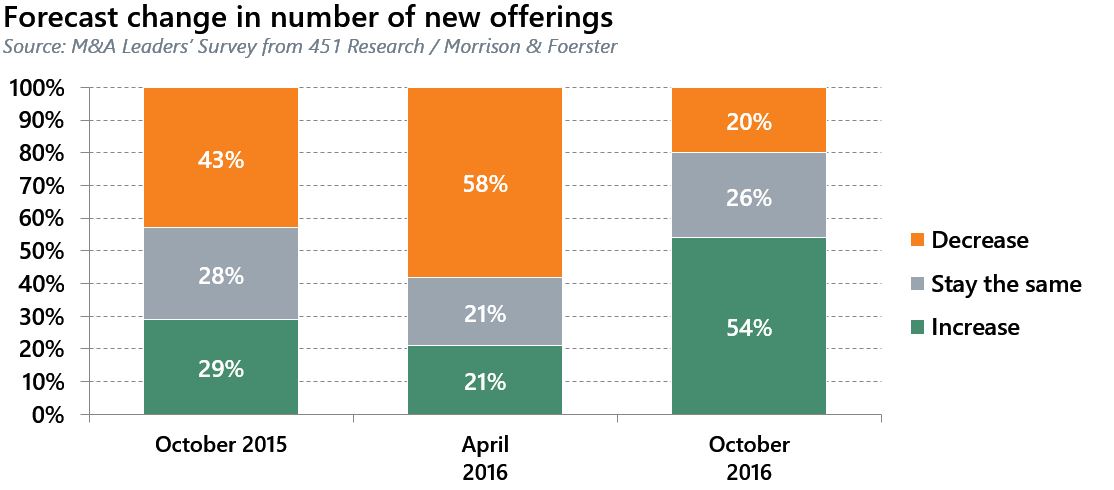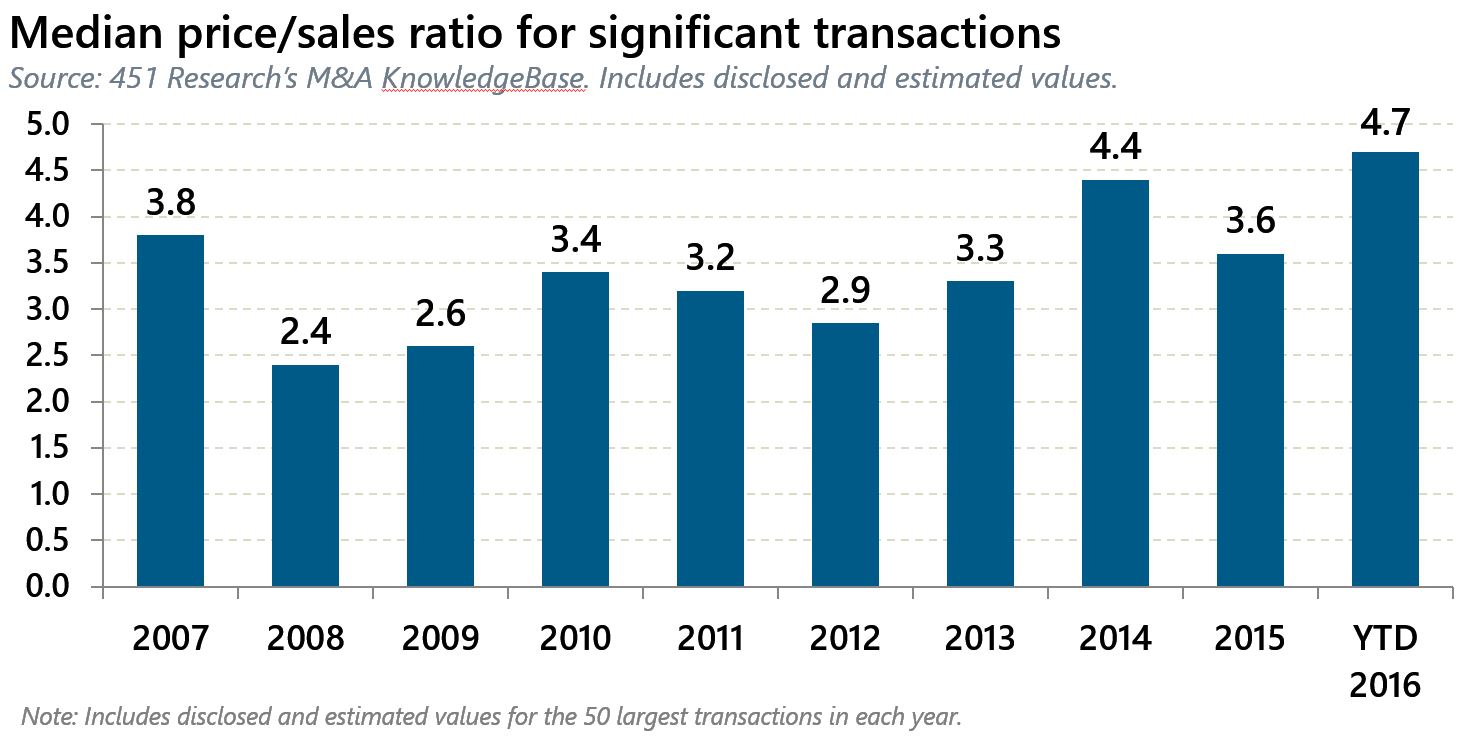Contact: Brenon Daly
Despite the lowest monthly total for tech acquisitions in three years, M&A spending in November just about kept pace with the historically high levels of 2016. Overall, acquirers spent about $38bn on tech deals around the world in the just-completed month, slightly below the average of $42bn during the previous 10 months. November spending pushed the value of transactions announced so far in 2016 to more than $450bn, the second-highest annual total since the internet bubble burst in 2000, according to 451 Research’s M&A KnowledgeBase.
Transactions that helped push the November spending level higher included:
- Samsung placed an ambitious $8bn bet on the emerging connected car market, acquiring HARMAN. In the past decade and a half, the Korean giant hadn’t spent more than $350m on a single tech purchase.
- Announcing its third multibillion-dollar deal in as many years, Broadcom paid $5.5bn for Brocade. As part of the deal, Broadcom is expected to divest a major portion of Brocade’s business, which could help it recoup several billion dollars.
- Symantec followed up a $4.7bn acquisition last spring to bolster its enterprise security business with the $2.3bn purchase of LifeLock in an attempt to revive its flagging consumer security division.
But the real story of tech M&A last month is the dramatic decline in overall deal volume, where November – like the result of last month’s US presidential election – saw a dramatic split. Basically, the first half of the month roughly matched the rate of acquisition announcements from 2016, but then activity plummeted: Dealmakers announced 156 transactions from November 1-15, but just 94 acquisitions (or 38% of the monthly total) from November 16-30, according to the M&A KnowledgeBase. Of the 20 largest deals last month, fully three-quarters of them (15 transactions) came in the first two weeks.
Undeniably, deal flow was somewhat slowed by the US Thanksgiving holiday in the next-to-last week of November. But even with that holiday, there were almost an equal number of business days in the first and second halves of the month. And, keep in mind, the first half of last month also featured its own interruption to business in the form of a national election. Ahead of the presidential election, nearly one-third of respondents (31%) to the M&A Leaders Survey from 451 Research and Morrison & Foerster indicated that the US presidential election had slowed their dealmaking activity. That impact appears to already be registering in actual deal flow as transaction volume in November dropped by 25% compared with the average number of monthly prints in 2016.
2016 tech M&A activity, monthly
|
Source: 451 Research’s M&A KnowledgeBase




